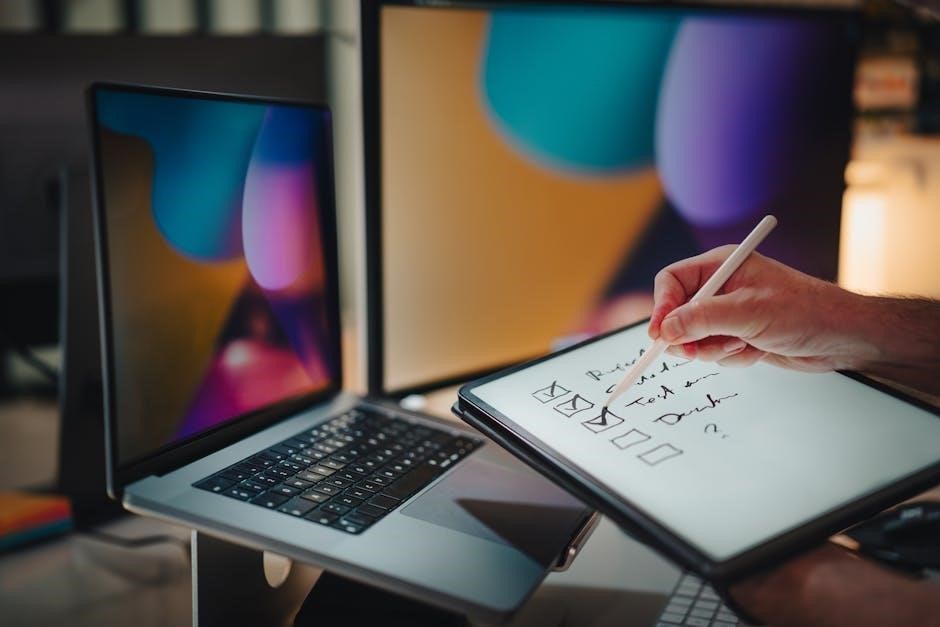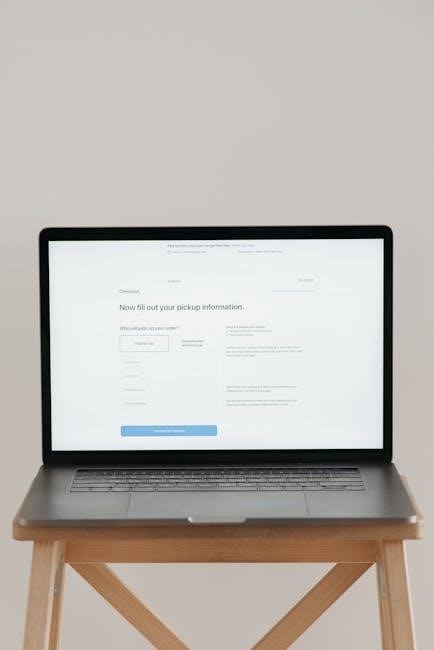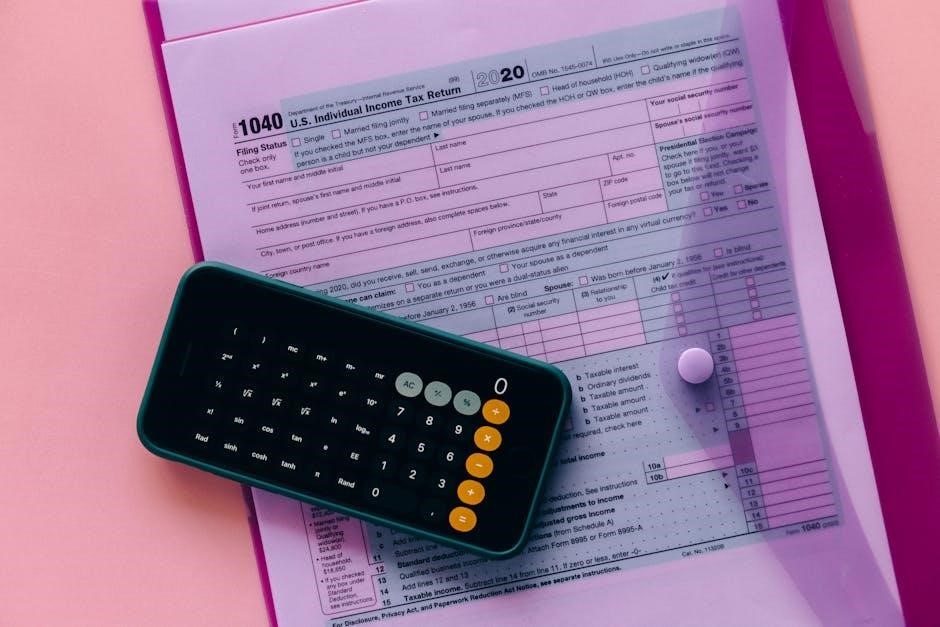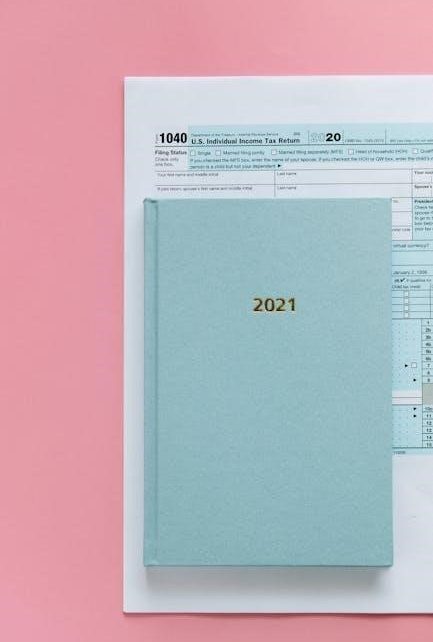Free government laptops are initiatives aimed at providing digital access to low-income individuals, students, disabled persons, and refugees, bridging the digital divide and empowering through technology.
1.1. What Are Free Government Laptops?
Free government laptops are programs designed to provide computers to individuals in need, such as low-income families, students, disabled persons, and refugees. These initiatives aim to bridge the digital divide by offering access to technology for education, employment, and daily life. The laptops are often refurbished or distributed through government-funded schemes and non-profit organizations. Eligibility varies but typically targets those facing financial hardships or specific demographic groups. The programs emphasize digital inclusion, ensuring everyone can benefit from modern technological advancements. They are a vital resource for those who cannot afford computers, helping to level the playing field in an increasingly digital world. These laptops are usually distributed free of charge or at a significantly reduced cost.
1.2. Importance of Digital Inclusion
Digital inclusion is crucial for ensuring equal access to opportunities in education, employment, and daily life. It enables individuals to connect with resources, services, and information essential for modern living. Free government laptops play a vital role in bridging the digital divide, particularly for low-income families, students, and marginalized groups. By providing access to technology, these programs empower individuals to participate fully in society, enhancing their ability to learn, work, and engage in civic activities. Digital inclusion fosters economic growth, improves quality of life, and ensures no one is left behind in an increasingly digital world. It is a cornerstone of equitable development and social progress.

Eligibility Criteria for Free Government Laptops
Eligibility for free government laptops typically includes low-income individuals, students, disabled persons, and refugees, with specific requirements varying by program and provider.
2.1. Income-Based Eligibility
Income-based eligibility is a primary criterion for free government laptops, targeting low-income individuals and families. Typically, applicants must meet specific income thresholds, often tied to federal poverty guidelines. For instance, eligibility may require household income to be at or below 135% or 200% of the poverty line. Programs like Medicaid, SNAP, or other government assistance often serve as qualifiers. Documentation, such as tax returns or benefit award letters, is necessary to verify income status. This ensures laptops reach those most in need, helping bridge the digital divide and promote economic mobility. Income-based eligibility varies by program and provider, so checking specific requirements is essential.
2.2. Student-Specific Programs
Student-specific programs provide free government laptops to eligible students, ensuring access to digital tools for education. These initiatives often require proof of enrollment in a qualifying educational institution or participation in federal assistance programs like Medicaid or SNAP. Students from low-income families or those receiving EBT benefits may qualify. Some programs, such as the Affordable Connectivity Program (ACP), offer discounted or free devices to students. Documentation like school ID, acceptance letters, or financial aid award letters may be needed. These programs aim to close the digital divide, enabling students to complete homework, access online resources, and participate in virtual learning environments effectively.
2.3. Eligibility for Disabled Individuals
Disabled individuals may qualify for free government laptops through specific programs designed to enhance digital accessibility. Eligibility typically requires proof of disability, such as Social Security disability benefits or a medical certification. Programs like the Affordable Connectivity Program (ACP) and StandUp Wireless offer discounted or free devices to disabled individuals, ensuring they can access essential digital resources. Some organizations, such as Computers 4 People, also provide refurbished laptops to those in need, including disabled persons. These initiatives aim to promote independence and equal access to technology, helping disabled individuals stay connected and participate fully in society.
2.4. Eligibility for Refugees
Refugees may qualify for free government laptops through specialized programs aimed at supporting displaced individuals. Eligibility often requires proof of refugee status, such as official documents or asylum letters. Some initiatives, like the Affordable Connectivity Program (ACP), extend benefits to refugees, enabling them to access affordable devices. Additionally, organizations like Computers 4 People and StandUp Wireless provide refurbished laptops to those in need, including refugees. These programs help bridge the digital divide, offering refugees access to essential resources, education, and communication tools. Refugees are encouraged to explore these opportunities and submit the required documentation to apply for free government laptops.

Application Process for Free Government Laptops
The application process for free government laptops is straightforward, involving online or offline form submissions, required documentation, and follow-up steps to ensure successful approval.
3.1. Online Application Process
The online application process for free government laptops is designed to be user-friendly and accessible. Candidates typically start by visiting the official website of the program or initiative offering the laptops. They then locate and click on the “Apply for Laptop Scheme” or a similarly labeled button. Next, applicants are directed to fill out a detailed form, which includes personal information, eligibility criteria, and program-specific questions. Required documents, such as proof of income or enrollment, are usually uploaded digitally. Once the form is completed and submitted, applicants receive a confirmation and can track their application status through a provided portal or contact information. This method ensures efficiency and convenience for those seeking to benefit from the program.
3.2. Offline Application Process
The offline application process for free government laptops is an alternative for those without internet access or who prefer in-person submissions. Applicants can obtain physical forms from designated centers, such as local government offices, schools, or community organizations. The form must be filled out accurately, including personal details and eligibility criteria, and signed by the applicant or their guardian if applicable. Required documents, like proof of income or enrollment, are attached to the form. Completed applications are then submitted to the same centers or mailed to the program’s address. Applicants receive a receipt or reference number for tracking their application status, ensuring a smooth and accessible process for all eligible individuals.
3.3. Required Documentation
To apply for a free government laptop, specific documents are necessary to verify eligibility. Proof of income, such as tax returns or benefit letters, is required for income-based programs. Identification documents, like a valid ID or passport, are mandatory. Students must provide proof of enrollment from their educational institution. Disabled individuals may need a medical certificate, while refugees should submit relevant immigration documents. These documents ensure that the program reaches those in need. Applicants must attach copies of these documents to their application form, either online or offline, to complete the process successfully. Proper documentation is crucial for a smooth and timely review of the application.
3.4. Submission and Follow-Up
After completing the application form and attaching the required documents, submit it through the designated online or offline channels. Online applications typically require clicking a “Submit” button, while offline applications may involve mailing the form or handing it in at a local center. Upon submission, applicants usually receive a confirmation email or reference number. It is essential to keep this information safe for future correspondence. Follow-up may be required if there are delays or additional document requests. Applicants should wait 2-4 weeks for processing and contact the support team if they experience extended delays. Regularly checking email or the application portal for updates is recommended to ensure timely communication and avoid missing important notifications.

Required Documentation for Application
Applicants must provide proof of income, identification documents, and, for students, proof of enrollment. Additional documentation may include residency verification or disability certification, if applicable.
4.1. Proof of Income
Applicants must submit proof of income to verify eligibility, such as recent tax returns, pay stubs, or employer letters. This documentation ensures compliance with income-based criteria for free government laptops. Low-income individuals, including those receiving benefits like SNAP or Medicaid, may use these as proof. Income verification is crucial to determine eligibility for programs like the Affordable Connectivity Program (ACP). Each program may have specific income thresholds, so applicants must review requirements carefully. Ensuring all income-related documents are accurate and up-to-date is essential for a successful application. This step helps providers allocate resources effectively to those in need.
4.2. Identification Documents
Applicants must provide valid identification documents to confirm their identity and eligibility. Commonly required documents include driver’s licenses, passports, or state-issued ID cards. These documents help verify citizenship or residency status, which is often a requirement for government programs. Additionally, Social Security cards or birth certificates may be requested to confirm personal details. Some programs may also ask for proof of residency, such as utility bills or lease agreements. Ensuring all identification documents are valid and up-to-date is crucial for a smooth application process. This step ensures that resources are allocated to eligible individuals and prevents fraudulent applications. Proper identification is a cornerstone of the application process.
4.3. Proof of Enrollment (For Students)
Students applying for free government laptops must provide proof of enrollment to qualify for specific programs. This documentation confirms their academic status and eligibility for educational benefits. Commonly accepted documents include a letter from the educational institution, a current class schedule, or a valid student ID. The enrollment proof must clearly state the applicant’s name, institution details, and the current academic term. This requirement ensures that resources are directed toward active students who can benefit most from the program. Applicants are advised to obtain this documentation from their school’s administration or student services office. Accurate and up-to-date enrollment proof is essential to avoid delays in processing the application.

Benefits of Free Government Laptops
Free government laptops provide access to digital tools, enhancing education, employment, and connectivity for low-income individuals, students, and disabled persons.
5.1. Educational Advantages
Free government laptops significantly enhance educational opportunities by providing students with access to online learning resources, digital textbooks, and research tools. They enable seamless completion of assignments, participation in virtual classrooms, and communication with teachers. Additionally, these laptops facilitate access to educational software and platforms, such as online tutoring services, which can improve academic performance. Students can also collaborate with peers on group projects and stay updated with modern educational technologies. Overall, free laptops empower students to succeed in an increasingly digital learning environment, fostering better academic outcomes and preparing them for future career opportunities.
5.2; Employment Opportunities
Free government laptops play a crucial role in enhancing employment opportunities by providing individuals with the tools needed to compete in the digital job market. With a laptop, users can search for job openings, create and submit resumes, and complete online applications. Remote work opportunities also become accessible, allowing individuals to participate in the gig economy or freelance. Additionally, laptops enable access to online courses and skill development programs, which can improve employability. This digital empowerment helps bridge the gap for low-income individuals, disabled persons, and refugees, offering them equal chances to secure stable employment and improve their socioeconomic status.

5.3. Access to Digital Resources
Free government laptops significantly enhance access to digital resources, enabling users to explore a wealth of educational, employment, and social opportunities. With a laptop, individuals can utilize online learning platforms, access government services, and connect with vital community resources. Programs like the Affordable Connectivity Program (ACP) further support this by offering discounted internet services. Additionally, free laptops empower users to navigate digital tools for job searches, healthcare portals, and financial assistance programs. This access fosters independence and self-sufficiency, particularly for low-income families, students, and refugees, ensuring they remain connected to essential services and opportunities in an increasingly digital world.

Challenges and Considerations
Challenges include stringent eligibility criteria, limited program availability, and complex application processes, requiring proper documentation and follow-up to ensure successful approval for free government laptops;
6.1. Eligibility Restrictions
Eligibility for free government laptops is often restricted to specific groups, such as low-income families, students, disabled individuals, and refugees. These programs typically require participants to meet income thresholds or participate in government-assisted initiatives like the Affordable Connectivity Program (ACP), EBT, or Medicaid. Stringent criteria can limit access for those who do not meet all requirements, creating challenges for potential applicants. Additionally, some programs may prioritize students or individuals with disabilities, further narrowing eligibility.
These restrictions can result in disappointment for those who need a laptop but do not qualify, highlighting the need for broader access to digital resources. Program variations across states also add complexity.
6.2. Limited Availability
Free government laptop programs often face limited availability due to high demand and constrained resources. Many initiatives have a capped number of devices to distribute, leading to long waiting lists. Funding restrictions and program capacity further exacerbate these limitations, making it difficult for all eligible applicants to receive a laptop. Additionally, some programs may only be available in specific regions or states, creating disparities in access. This scarcity can frustrate individuals who meet the eligibility criteria but are unable to secure a device due to supply shortages. Limited availability underscores the need for increased funding and expanded programs to meet the growing demand for digital inclusion.

Government Initiatives and Programs
Governments worldwide have launched initiatives like the Affordable Connectivity Program (ACP) and state-specific laptop schemes to provide free devices, ensuring digital access for low-income individuals, students, and refugees.
7.1. Affordable Connectivity Program (ACP)
The Affordable Connectivity Program (ACP) is a federal initiative offering discounted internet services and devices to low-income households; Eligible individuals can receive a free or low-cost laptop or tablet, enabling access to essential digital resources. The program is designed to bridge the digital divide, supporting education, employment, and connectivity for those in need. To qualify, applicants must participate in federal assistance programs like Medicaid, SNAP, or SSI, or have a household income at or below 200% of the poverty line. The ACP has become a cornerstone for digital inclusion, helping millions gain access to technology and opportunities for upward mobility.
7.2. EBT and Medicaid Recipients
Recipients of Electronic Benefits Transfer (EBT) and Medicaid are eligible for free government laptops through various assistance programs. These programs aim to bridge the digital divide by providing access to technology for low-income individuals. EBT recipients, such as those receiving SNAP benefits, and Medicaid beneficiaries qualify under federal guidelines, making them eligible for discounted or free devices. This initiative ensures that individuals with limited financial resources can access essential digital tools for education, employment, and connectivity. By participating in these programs, EBT and Medicaid recipients can gain access to free laptops, empowering them to navigate the digital world and improve their quality of life.
7.3. State-Specific Laptop Programs
State-specific laptop programs are tailored initiatives designed to address local digital divide challenges. For instance, some states provide free laptops to meritorious students or low-income families through targeted schemes. Uttar Pradesh, for example, has proposed free laptops for high-achieving students, while other states may offer similar benefits to bridge the digital gap. These programs often align with federal initiatives but include additional eligibility criteria based on state-specific needs. To apply, applicants typically need to meet income thresholds, demonstrate academic merit, or belong to underprivileged groups. Applications are usually submitted through state-run portals or educational institutions, with required documentation such as proof of residency and income. These programs aim to enhance digital inclusion and empower individuals at the grassroots level, fostering education and employment opportunities.

Non-Profit Organizations and Partners
Non-profits like Computers 4 People and StandUp Wireless provide refurbished devices to those in need. These organizations assist low-income individuals, students, and disabled persons through application processes.
8.1. Computers 4 People
Computers 4 People is a non-profit organization dedicated to providing refurbished devices to individuals in need. They focus on bridging the digital divide by offering affordable access to technology. The organization specifically targets low-income families, students, and disabled persons, ensuring they can benefit from digital resources. Their application process is straightforward, requiring individuals to complete a short online form detailing their needs and eligibility. Computers 4 People plays a crucial role in supporting those who cannot afford modern technology, enabling them to participate fully in education, employment, and other essential activities. Their efforts align with government initiatives to promote digital inclusion and empowerment.
8.2. StandUp Wireless
StandUp Wireless is a non-profit organization dedicated to helping low-income individuals gain access to free government laptops and discounted internet services. They primarily cater to those eligible under the Affordable Connectivity Program (ACP) and other federal assistance initiatives. StandUp Wireless provides detailed guides and support to navigate the application process for free laptops, ensuring individuals can access essential digital tools. Their mission emphasizes digital inclusion, aiming to bridge the technology gap for underserved communities. By offering free laptops and affordable internet, they empower individuals to pursue educational opportunities, employment, and stay connected in an increasingly digital world. Visit their official website for application steps and eligibility criteria.

How to Apply for Free Government Laptops
To apply, visit the official website, complete the application form with accurate details, upload required documents, and submit for review and approval.
9.1. Steps to Complete the Application Form
To complete the application form for free government laptops, start by visiting the official website of the program or initiative you are applying for. Locate the “Apply for Laptop Scheme” button and click on it to begin the process. Next, fill in all required information accurately, ensuring that all fields marked as mandatory are completed. Upload necessary documents, such as proof of income, identification, or enrollment letters, as specified by the program. Review your application to avoid errors, then submit it for review. Follow up periodically to check the status of your application and provide additional information if requested. Completing the form thoroughly and accurately increases your chances of approval.
9.2. Tips for a Successful Application
To ensure a successful application for a free government laptop, start by carefully reviewing the eligibility criteria and required documents. Submit your application well before the deadline to avoid last-minute issues. Ensure all information provided is accurate and complete, as errors or omissions may delay processing. Upload clear and legible copies of required documents, such as proof of income or identification, to avoid rejection. Double-check the application form for any typos or missing fields before submission. Additionally, follow up with the program administrators to confirm receipt of your application and inquire about its status. Professionalism and attention to detail will enhance your chances of approval.
Free government laptops empower individuals by bridging the digital divide, offering educational and employment opportunities. Eligible applicants are encouraged to apply and take advantage of these transformative resources.
10.1. Final Thoughts on Free Government Laptops
Free government laptops are a vital resource for bridging the digital divide, offering access to education, employment, and essential services. These programs, supported by initiatives like the Affordable Connectivity Program (ACP), EBT, and Medicaid, ensure that low-income individuals, students, and refugees can participate fully in the digital world. Non-profit organizations, such as Computers 4 People and StandUp Wireless, also play a crucial role in refurbishing and distributing devices to those in need. By providing free laptops, these programs empower individuals to achieve their goals and improve their quality of life. Eligible applicants are encouraged to explore these opportunities and complete the application process to secure a free laptop, fostering digital inclusion and equality.
10.2. Encouragement to Apply
Applying for a free government laptop is a straightforward process that can unlock numerous opportunities for education, employment, and digital connectivity. With initiatives like the Affordable Connectivity Program (ACP) and partnerships with non-profits, eligible individuals can easily access the resources they need. Don’t hesitate to take the first step—review the eligibility criteria, gather required documents, and submit your application. The process is designed to be user-friendly, ensuring that everyone who qualifies can benefit. A free laptop can empower you to achieve your goals, whether it’s advancing your education, finding a job, or staying connected with loved ones. Seize this opportunity to enhance your digital capabilities and transform your future.
